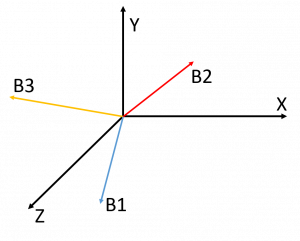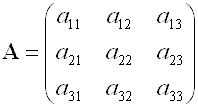What is Estimation? Estimate What?
If you are driving a car and you are to check what speed you are cruising at, what would you do? Possibly, check the speedometer and tell! The speedometer is able to directly ‘measure’ the speed for you. Now, if you were to count the number of kids you pass by on the streets, what would you do? Certainly, there isn’t a ‘kidometer’ to recognise kids on the street and count them for you. In such a case, you could employ the tool of ‘estimation’. Randomly count kids in vicinity when you are at a traffic signal and based on data you’ve collected, make an estimation. The point is that when you cannot directly measure a quantity, you use the available data and guesstimate.
When we are to calculate the attitude in a satellite, we encounter a similar issue. There is no equipment that directly measures attitude. Instead, what we are required to do is to use measurements from a varied set of devices and use these collectively to ‘estimate’ the attitude.
Multiple sensors could be employed to get measured vector quantities in the body frame of satellite (essentially a set of 3 orthogonal coordinate axes imagined to be fixed to the satellite’s body) . For instance, a sun sensor gives a sun vector and a magnetometer gives the Earth’s magnetic field vector. These quantities are compared with their calculated values from scientific models in the reference frame (represents the required orientation of the coordinate axes of the satellite at a point in space) and the satellite’s attitude is ‘estimated’.
If you are given two randomly oriented pairs of 3D orthogonal coordinate axes and asked to align them ,what would you do? Is aligning one pair of axes enough? No! The other two pairs could still be rotated in their plane about this axis. So, what if you align another pair? That’s it! They are perfectly matched now. So, intuitively, we could say that to align two 3D frames we would need a minimum of two pairs of vectors in these frames. The same holds true for the body and reference frames of a satellite.
Mathematically too, it turns out that the rotation matrix (which represents this process of alignment) has nine elements with six constraints imposed on them to qualify as a valid rotation matrix. The other three constraints to uniquely determine this matrix are to come from the vector pairs compared in both frames. Each of these pairs, you might think, provides three additional constraints. After all, we are to match three coordinates of both the vectors in the two frames. Remember, however, that these two vectors depict the same physical quantity in two different frames. So if two of their coordinates are matched, so is their third. This is because their magnitude (and we know this value from what quantity they represent) has to be the same in both frames. In fact, the vector pairs are all normalised to make things less complicated.
Say, A is the rotation matrix.
The constraints then would be,
Since a vector has 3 components, it would seem a priori that it gives 3 constraints.
There is a subtlety involved above. We need three constraints for the rotation matrix and each vector pair comes with two. One pair would be insufficient (underdetermination) and two pairs despite being sufficient would pose the problem of overdetermination. What do you do when you have more equations than variables to solve? Ideally, this shouldn’t be an issue. If a set of n variables satisfy are found to satisfy n equations, then they should also satisfy the remaining, superfluous equations. But then with errors from the sensors it would not be possible to find solutions that satisfy them all. Think of it, when we were trying to align the two orthogonal basis before, what if one of them was distorted? How would you align them? So, overdetermination is an issue. Again, we circumvent this problem with ‘estimation’ algorithms.
If you were a crime investigator with multiple leads from different sources, how would you proceed? Possibly, analyse all of them but ‘weight’ them based on their reliability and then decide your next step. This is what estimation algorithms do. They ‘weight’ the sensors based on their reliability. It is important to make this point that using multiple sensors (and hence more than two vector pairs for estimating rotation matrix) is not a liability as long as we are able to weight them optimally.
So what are these estimation algorithms? There is the Triad algorithm. This is, probably, the most basic of all. It takes two vector pair inputs, perfectly aligns one vector pair (note that it relies heavily on a single sensor measurement) and then aligns the plane containing these vectors. Notice that the other vector pair may not be aligned at all!
‘QuEst’ or ‘Quaternion Estimation’ is another estimation algorithm. Yet again it aligns the plane containing the vector inputs. However, the error in the alignment of the vector pairs are a consequence of how their respective sensors are weighted. If you trust a sensor more, it is logical to minimise the error in its corresponding vector pair. One can find multiple estimation algorithms in literature.
If you are done reading this page, you can go back to Attitude Determination and Control Subsystem.

